
Dario Argento is an Italian film director, screenwriter and producer. His influential work in the horror genre during the 1970s and 1980s, particularly in the subgenre known as giallo, has led him to being referred to as the "Master of the Thrill" and the "Master of Horror".

Suspiria is a 1977 Italian supernatural horror film directed by Dario Argento, who co-wrote the screenplay with Daria Nicolodi, partially based on Thomas De Quincey's 1845 essay Suspiria de Profundis. The film stars Jessica Harper as an American ballet student who transfers to a prestigious dance academy but realizes, after a series of murders, that the academy is a front for a coven of witches. It also features Stefania Casini, Flavio Bucci, Miguel Bosé, Alida Valli, Udo Kier, and Joan Bennett, in her final film role.
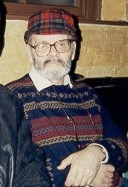
Lucio Fulci was an Italian film director, screenwriter, and actor. Although he worked in a wide array of genres through a career spanning nearly five decades, including comedies and spaghetti Westerns, he garnered an international cult following for his giallo and horror films.

Mario Bava was an Italian filmmaker who worked variously as a director, cinematographer, special effects artist and screenwriter. His low-budget genre films, known for their distinctive visual flair and stylish technical ingenuity, feature recurring themes and imagery concerning the conflict between illusion and reality, as well as the destructive capacity of human nature. Widely regarded as a pioneer of Italian genre cinema and one of the most influential auteurs of the horror film genre, he is popularly referred to as the "Master of Italian Horror" and the "Master of the Macabre".

Lamberto Bava is an Italian film director. Born in Rome, Bava began working as an assistant director for his director father Mario Bava. Lamberto co-directed the 1979 television film La Venere d'Ille with his father and in 1980 directed his first solo feature film Macabre.
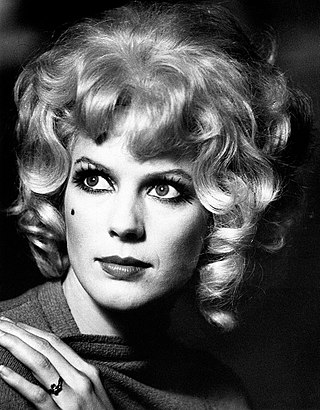
Merle "Mimsy" Farmer is a former American actress, artist and sculptor. She began her career appearing in several Hollywood studio films, such as Spencer's Mountain (1963) and Bus Riley's Back in Town (1965), followed by roles in the exploitation films Devil's Angels and Riot on Sunset Strip.

Phenomena is a 1985 Italian giallo-horror film directed and co-written by Dario Argento, and starring Jennifer Connelly, Daria Nicolodi, Dalila Di Lazzaro, Patrick Bauchau and Donald Pleasence. The plot concerns an American girl at a remote Swiss boarding school who discovers she has psychic powers that allow her to communicate with insects, and uses them to pursue a serial killer who is butchering young women at and around the school.

Tenebrae is a 1982 Italian giallo film written and directed by Dario Argento. The film stars Anthony Franciosa as American author Peter Neal, who – while in Rome promoting his latest murder-mystery novel – becomes embroiled in the search for a serial killer who may have been inspired to kill by his novel. John Saxon and Daria Nicolodi co-star as Neal's agent and assistant respectively, while Giuliano Gemma and Carola Stagnaro appear as detectives investigating the murders. John Steiner, Veronica Lario, and Mirella D'Angelo also feature in minor roles. The film has been described as exploring themes of dualism and sexual aberration, and has strong metafictional elements; some commentators consider Tenebrae to be a direct reaction by Argento to criticism of his previous work, most especially his depictions of murders of women.
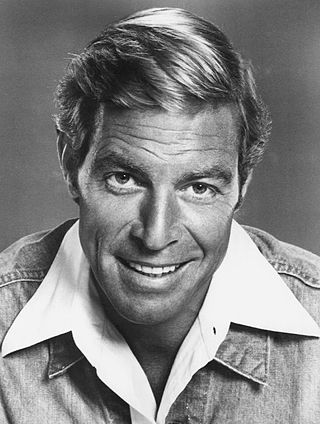
James Grover Franciscus was an American actor, known for his roles in feature films and in six television series: Mr. Novak, Naked City, The Investigators, Longstreet, Doc Elliot, and Hunter.

Trauma is a 1993 Italian giallo horror film directed by Dario Argento and starring Asia Argento, Christopher Rydell, Piper Laurie, and Frederic Forrest. Set in Minneapolis, Minnesota, it follows a troubled teenage girl who, with the help of a boyfriend, attempts to stop a serial killer who murdered her parents.
Franco Ferrini is an Italian screenwriter. His works often fall into the genres of horror or thriller. He was one of the interviewees represented in the book Spaghetti Nightmares.

Luigi Cozzi is an Italian film director and screenwriter. At a young age, Cozzi became a fan of science fiction and began his career as an overseas correspondent for Western film magazines. After directing his first film The Tunnel Under the World, Cozzi befriended director Dario Argento and began working with him in film and television as well as directing his own features including Hercules as well as continuing work with Argento. In the 2010s, he returned to directing with the film Blood on Méliès' Moon.
The Other Person is a 1921 Dutch-British silent mystery film directed by Maurits Binger and B.E. Doxat-Pratt. It was a co-production between a Dutch film company and a British film company.
Ania Pieroni is a former Italian actress, known for The House by the Cemetery (1981), Tenebrae (1982) and Inferno (1980).
Turno di notte is an Italian television series produced by Dario Argento. It had one season of 15 episodes running from 1987 to 1988.
Gli incubi di Dario Argento is a TV series created and directed by Dario Argento as part of Giallo Argento, a segment of RAI TV show Giallo by Enzo Tortora.
Alan Jones is a film critic, broadcaster, and reporter primarily focused on movies in production, especially in the horror fantasy genre. His first assignment was on Star Wars in 1977, after which he became the London correspondent for Cinefantastique magazine from 1977 to 2002 and reviewed for the British magazine Starburst from 1980 until 2008. A film critic for Film Review and Radio Times, he has made contributions to the Radio Times Guide to Films, the Radio Times Guide to Science Fiction, and Halliwell's Film Guide. He has also been a film critic for BBC News 24, Front Row on BBC Radio 4, and Sky News programme Sunrise. He has worked for Empire, Première, and Total Film. An article of his in the latter coined the term for the Splat Pack.

Amuck! is a 1972 Italian giallo film written and directed by Silvio Amadio.
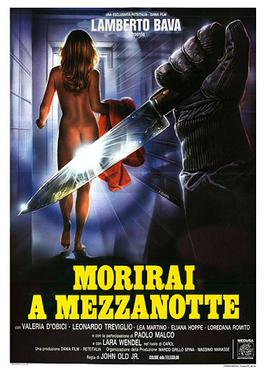
Midnight Killer is a 1986 Italian giallo film starring Valeria D'Obici and Leonardo Treviglio, and directed by Lamberto Bava.
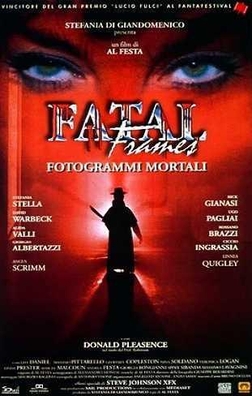
Fatal Frames is a 1996 Italian giallo film directed by Al Festa. It stars his wife, singer Stefania Stella. The film is about the American music video director Alex Ritt who is hired to direct the latest Stefania stelle video in Rome. While there, he witnesses a brutal killing. By the time the police arrive, the body has vanished and no traces of blood are found. When Ritt witnesses a second murder with the same circumstances, he tries to discover the truth.













